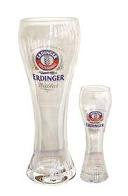No, Alf has not become a wowser and he will not be signing up in support of the Herald on Sunday’s Two Drinks Max campaign.
But at first glimpse – he confesses – he thought the campaign had a great thing going for it: it is promoting the idea that we should do what we think is best, not what the bloody prohibitionists or the Government thinks is best.
This is a worthy approach, thoroughly in tune with Alf’s libertarian instincts.
Editor Bryce John says –
Sometimes life it is nice not to have to be told to do the right thing. You know it’s right; you just do it.
The Herald on Sunday campaign launching today – Two Drinks Max – is one of those times. Our Government, for reasons we think are pretty lightweight, is not moving to reduce the amount of alcohol you can drink before you drive.
In doing so it is passing up the chance to save lives. Our poll proves the New Zealand public know this, and want the rules changed.
But we don’t need legislation. The power is in our hands to ensure we drive safely, and pledging not to drink after having any more than two standard drinks is the way to do it.
Laudable sentiments.
And so readers are invited to sign up in support, making their own commitments to a two drinks limit at the Herald website or on Facebook.
Or they can register support on Twitter.
Underpinning this campaign is the notion that the current drink-driving limit allows for far more than one or two social drinks on a night out.
Blood alcohol level experts reckon this is too high to allow for safe driving.
The newspaper can expect strong support because obviously it is read by wowsers and wimps so close to being wowsers that the distinction doesn’t much matter.
Or maybe they are liars.
These suspicions are based on the Herald on Sunday reader poll which showed three-quarters of respondents would not drive after having more than two drinks.
The newspaper refers to a recent survey
by the Ministry of Transport that showed 85 per cent support of limiting drivers to two or fewer drinks before driving.
A few well-known people have signed up in support of the HoS campaign already.
Racing driver Greg Murphy is one of them.
Murphy has thrown his weight behind the Herald on Sunday’s “Two Drinks Max” campaign to persuade the Government to lower the legal blood alcohol level. In fact, he is willing to take it further, pledging not to drive after drinking any alcohol.
Ah. The Pledge.
Let’s not forget the powerful forces of do-goodism that underpins such pledges and their ultimate objective.
The history of the temperance movement is instructive on this matter.
In 1832 Joseph Livesey and seven Preston workingmen signed a pledge that they would never again drink alcohol. Other groups of working men followed the example of Livesey and his friends and by 1835 the British Association for the Promotion of Temperance was formed.
At first temperance usually involved a promise not to drink spirits and members continued to consume wine and beer. However, by the 1840s temperance societies began advocating teetotalism. This was a much stronger position as it not only included a pledge to abstain from all alcohol for life but also a promise not to provide it to others.
See. Give the buggers a millilitre and they will throw the contents of your cellar down the drain in the name of temperance.
Alf has a strong suspicion that the modern-day equivalents of those pledge-signing wowsers include Alcohol Healthwatch director Rebecca Williams.
She says –
“There’s just no excuse for not adopting a lower level – that’s what all the evidence and science is telling us,” she says.
“That’s what the public is telling us. There’s just this big gaping, waiting hole there from the Government side. We simply do not need more research.”
Then there’s the Alcohol Advisory Council of New Zealand, whose chief executive, Gerard Vaughan, agrees that lower limits such as those in Australia means drivers are more likely to make sensible decisions before they hop in a car.
“From our point of view we can only see benefit in lowering the BAC [blood alcohol content] limit,” he says.
National Addiction Centre director Professor Doug Sellman supports this stuff, too, saying a campaign to lower drink-driving limits in New Zealand will “save lives, save injuries, save money and have a significant impact on the heavy drinking culture as well”.
But the national manager of road policing, Superintendent Paula Rose, spells out the real objective of the campaign, saying drivers are impaired well under the legal limit:
“To be 100 per cent sure, don’t drink and drive.”
See. Zero drinks.
For now, the two-glass limit is the objective of these 21st century wowsers.
Alf can do better than that, if push comes to shove and the two-glass thing becomes entrenched in law.
He will have just one.
Mind you, it will be a big one.

